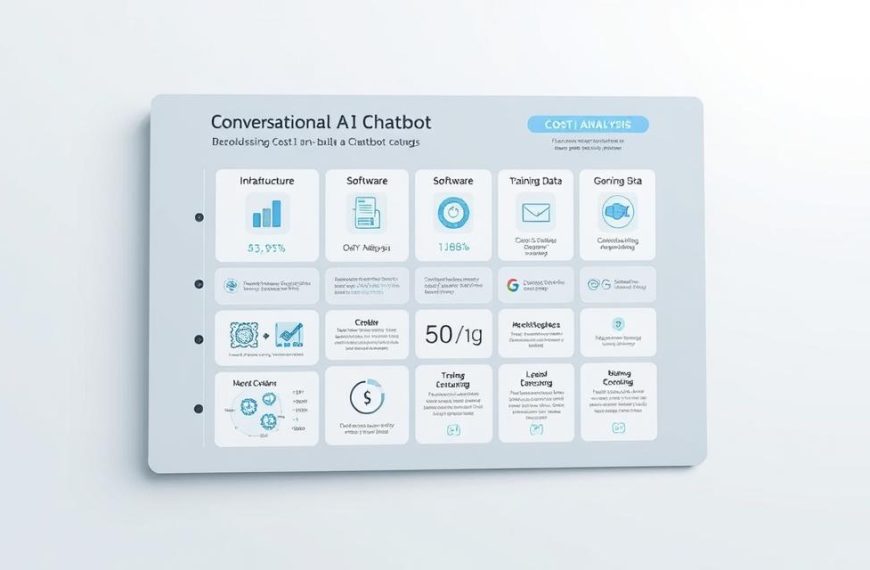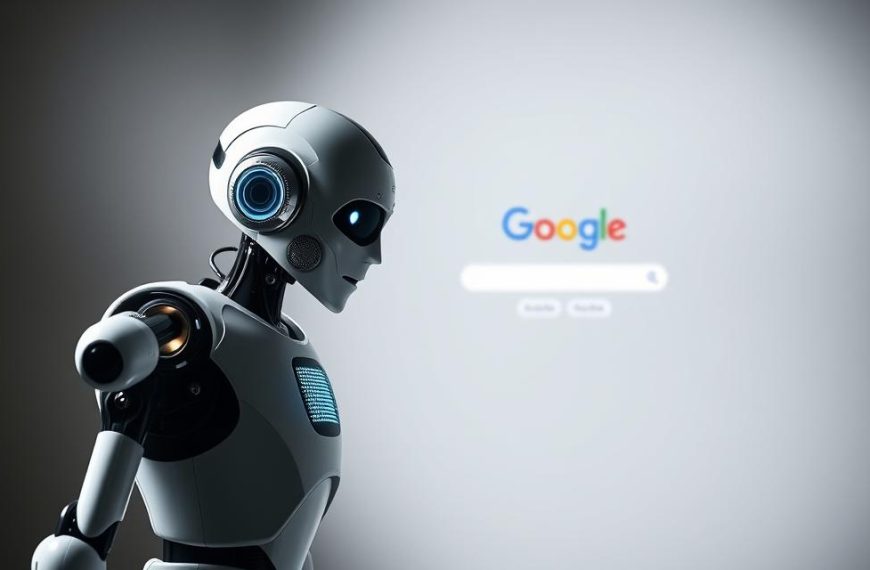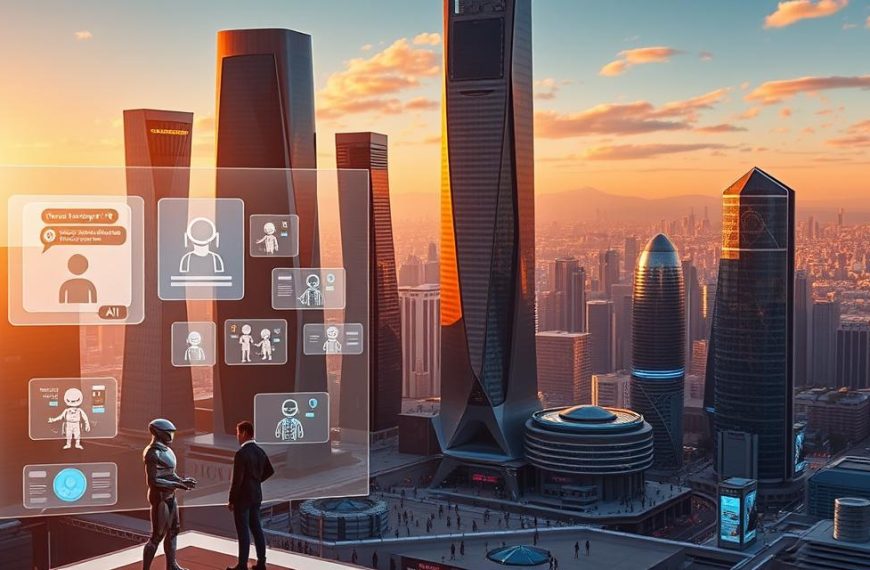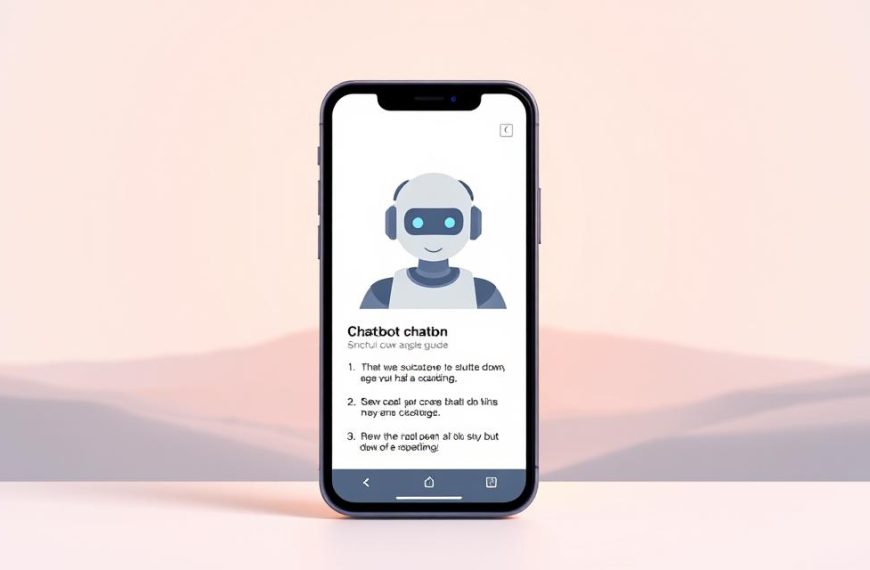The story of automated dialogue systems begins in 1960s laboratories, where visionary computer scientists first explored machine-human interaction. At MIT’s Artificial Intelligence Laboratory, Joseph Weizenbaum developed ELIZA between 1964 and 1966 – a revolutionary programme simulating therapeutic conversations. This experimental software used pattern recognition to mirror users’ statements, creating remarkably coherent exchanges for its era.
Weizenbaum’s creation sparked both excitement and scepticism within academic circles. By 1972, Stanford University’s Kenneth Colby pushed boundaries further with PARRY, a sophisticated model simulating paranoid thought patterns. These early experiments demonstrated artificial intelligence’s potential to mimic complex human behaviours.
The evolution from basic scripted responses to modern contextual understanding reveals fascinating technological progression. Initial systems relied on predefined rules rather than machine learning, yet established crucial frameworks for natural language processing. Their legacy lives on in contemporary customer service interfaces and virtual assistants reshaping global industries.
Understanding this history provides valuable perspective on current AI capabilities. Early limitations in computational power and linguistic analysis make today’s fluid conversations between humans and machines particularly impressive. The journey from ELIZA’s rudimentary scripts to neural network-driven dialogues highlights remarkable strides in artificial intelligence development.
Introduction to Chatbots and Their Historical Significance
Digital communication transformed when machines began understanding human queries. These programmes, now called chatbots, combine linguistic patterns with computational logic to mirror dialogue. Their development marks a critical milestone in making technology adapt to human behaviour rather than vice versa.
What Are Chatbots?
A chatbot functions as an AI-powered interface that interprets text or voice inputs. Using algorithms and databases, it generates context-aware responses within seconds. Modern versions handle tasks ranging from booking flights to diagnosing tech issues.
| Feature | Early Chatbots | Modern Chatbots |
|---|---|---|
| Technology | Rule-based scripts | Machine learning |
| Interaction | Predefined responses | Contextual understanding |
| Applications | Academic experiments | Customer service, healthcare, retail |
From Concept to Contemporary Use
Initially limited to basic pattern matching, these tools now utilise natural language processing to decode slang and idioms. Businesses prioritise them for 24/7 customer support, reducing operational costs by up to 30% in some sectors.
The shift from novelty to necessity occurred as companies recognised their scalability. Today, chatbots manage 85% of routine enquiries in major UK banks. This efficiency stems from decades refining how machines process human speech.
Early Pioneering Chatbots: ELIZA and PARRY
The 1960s witnessed a pivotal breakthrough in artificial intelligence with the creation of conversational programmes. Two systems revolutionised how machines could mimic human interaction through entirely rule-based approaches.
ELIZA: The First Chatbot Developed at MIT
Joseph Weizenbaum stunned the academic world with his 1966 creation at MIT. This first chatbot, known as ELIZA, employed simple pattern-matching rules to generate surprisingly coherent dialogues. Its most famous script, DOCTOR, simulated a psychotherapist by rephrasing users’ statements as questions.
The programme’s responses relied on identifying keywords rather than understanding context. Despite this limitation, many users believed they were conversing with a human – a phenomenon later termed the “ELIZA effect”.
PARRY: Simulating Human Thought and Emotion
Kenneth Colby at Stanford University developed PARRY in 1972 to explore emotional simulation. This advanced model mimicked a paranoid patient by adjusting mood parameters for anger and fear during conversations.
Unlike ELIZA’s static responses, PARRY could alter its tone based on perceived threats. The system’s ability to sustain thematic coherence made it a landmark in behavioural modelling. Both programmes demonstrated early success in limited Turing test scenarios, laying groundwork for modern dialogue systems.
who is the creator of chatbot: Richard Wallace and A.L.I.C.E.
The 1990s marked a turning point in conversational AI when Richard Wallace introduced A.L.I.C.E. (Artificial Linguistic Internet Computer Entity). This groundbreaking system advanced beyond ELIZA’s limitations through supervised learning techniques. Developers could now refine responses by analysing live interactions, creating more dynamic exchanges.
A.L.I.C.E. and the AIML Breakthrough
Wallace’s chatbot employed Artificial Intelligence Markup Language (AIML), an XML framework organising conversation rules. Unlike rigid scripts, this allowed flexible pattern matching across diverse queries. Botmasters updated knowledge bases whenever users posed unrecognised questions, enabling gradual improvement.
The system’s three Loebner Prize wins (2000, 2001, 2004) proved its ability to mimic human dialogue. Judges frequently mistook A.L.I.C.E. for a real person during tests – a testament to Wallace’s innovative approach. His work established critical principles for combining structured language rules with adaptive learning.
This methodology influenced later models by demonstrating how human oversight enhances machine intelligence. Modern chatbots still utilise variations of AIML’s hierarchical structure, showcasing Wallace’s enduring impact on conversation technologies.
Evolution from Rule-Based to AI-Driven Conversational Agents
The transformation of conversational technology from rigid decision trees to adaptive systems reflects humanity’s pursuit of genuine machine intelligence. This shift required fundamental changes in how programmes process language and learn from interactions.
Advancements in Machine Learning and Natural Language Processing
Early systems relied on manual scripting for every possible query. Modern solutions employ machine learning to analyse vast datasets, identifying patterns humans might overlook. Three critical developments enabled this progress:
- Neural networks that mimic human brain structures
- Contextual embedding techniques for semantic analysis
- Reinforcement learning frameworks for continuous improvement
These innovations allow natural language processing systems to handle regional dialects and slang. For instance, UK-focused chatbots now recognise phrases like “cheers mate” or “gutted” through advanced sentiment analysis.
The Enduring Influence of the Turing Test
Alan Turing’s 1950 benchmark remains central to evaluating conversational AI. His prediction that machines would fool humans 70% of the time by 2000 proved ambitious. Yet the pursuit of this goal drove crucial developments:
- Probabilistic response generation
- Emotional intelligence modelling
- Multi-turn conversation tracking
While no system consistently passes the Turing test, modern chatbots achieve 85% customer satisfaction in controlled environments. This progress stems from combining rule-based foundations with self-improving machine learning models.
The field continues evolving as developers integrate transformer architectures and real-time learning capabilities. These advancements suggest we’re nearing Turing’s vision of machines that converse indistinguishably from humans.
Modern Advancements in Conversational AI
Voice commands revolutionised human-computer interaction when tech giants introduced intelligent personal assistants. These systems combined sophisticated language processing with cloud computing to deliver unprecedented convenience. Their development marked a shift from typing queries to natural speech-based interfaces.
Voice Assistants and Intelligent Personal Assistants
Apple’s 2010 launch of Siri redefined mobile experiences. This virtual assistant used natural language UI to set reminders, send messages, and answer questions. Google responded with Google Now in 2012, evolving into Google Assistant with predictive suggestions based on user behaviour.
Amazon entered the arena in 2014 with Alexa, embedding voice control into smart speakers. Microsoft’s Cortana (2014) focused on productivity, syncing with Windows calendars and emails. These tools demonstrated how personal assistants could manage both home and work tasks through voice commands.
Integration of Natural Language Understanding
Modern systems analyse context rather than just keywords. They handle follow-up questions and regional accents – crucial for UK users with diverse dialects. Advances in language processing allow understanding phrases like “put the kettle on” as triggering smart home devices.
| Feature | 2010-2014 Assistants | Modern Capabilities |
|---|---|---|
| Core Technology | Basic voice recognition | Neural language models |
| Primary Functions | Simple queries & reminders | Multi-step task execution |
| Language Understanding | Predefined commands | Contextual conversations |
Today’s virtual assistants learn from interactions, improving responses through machine learning. This progression from rigid command systems to adaptive AI companions continues shaping how billions engage with technology daily.
The Future of Chatbots: Integrating Deep Learning and NLU
Conversational AI now navigates complex dialogues once thought impossible. Modern systems combine deep learning with advanced natural language understanding (NLU) to decode sarcasm, cultural references, and ambiguous phrasing. This leap forward stems from transformer architectures processing billions of linguistic patterns in real time.
Emerging Trends and Innovative Platforms
ChatGPT’s 2022 debut showcased unprecedented language generation abilities, handling everything from poetry to programming tutorials. Open-source frameworks like Rasa empower developers to build custom solutions without cloud dependencies. Key advancements driving progress:
- Contextual memory spanning multiple conversation turns
- Personalisation algorithms adapting to user speech patterns
- Multilingual models supporting 30+ languages simultaneously
Google’s Dialogflow exemplifies hybrid systems blending rule-based logic with machine learning. Its sentiment analysis detects frustration in phrases like “bloody useless bot”, triggering escalation protocols. Emerging platforms like Deepseek use 73% less computational power while maintaining response accuracy – crucial for sustainable AI development.
| Platform | Core Strength | Unique Feature |
|---|---|---|
| ChatGPT | Creative text generation | Handles 25k words/minute |
| Rasa | Data privacy control | On-premise deployment |
| Dialogflow | Multilingual support | Live agent handoff |
These innovations enable chatbots to manage 89% of customer conversations without human intervention in UK retail sectors. As systems learn from domain-specific datasets, they increasingly specialise in legal advice, medical triage, and technical support roles.
Conclusion
Human-machine dialogue has evolved from basic pattern recognition to sophisticated exchanges mirroring human conversation. Early systems like ELIZA demonstrated pattern-matching potential, while PARRY introduced emotional simulation – both foundational for modern AI. Today’s neural networks process context and intent, enabling chatbots to handle nuanced queries across industries.
Ongoing innovation blends linguistic analysis with predictive algorithms. UK businesses leverage these tools for customer service and operational efficiency, reducing response times by 40% in some sectors. Future developments may integrate emotional intelligence models, pushing machines closer to genuine comprehension.
This journey from scripted responses to adaptive learning underscores artificial intelligence’s transformative power. As technology advances, conversational systems will continue redefining how humans interact with digital interfaces – one meaningful exchange at a time.


















